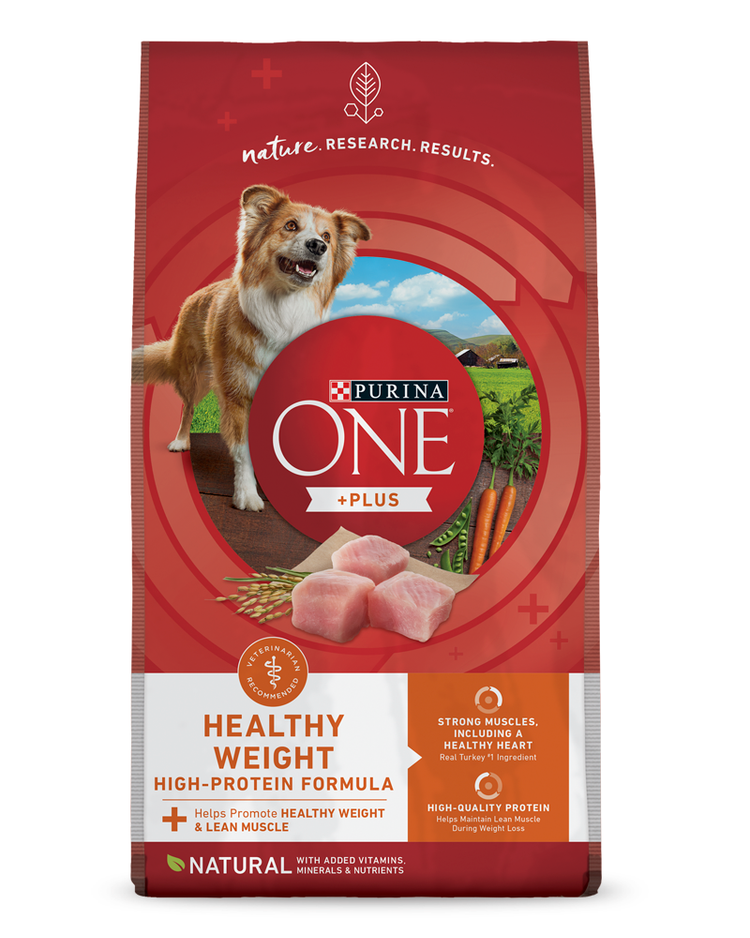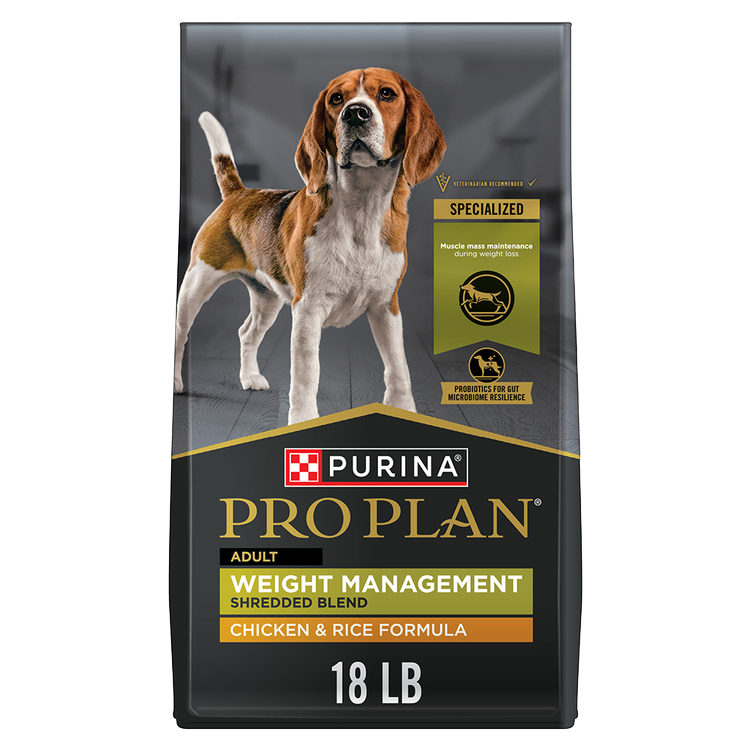How Can I Help My Dog Lose Weight?


It can be easy to overfeed your dog, especially if they are food-motivated and eating makes them happy. Just like with humans, however, excess food and treats – and a lack of exercise – can lead to weight gain, which may cause serious health problems.
If your pet has put on some extra pounds, they’re not alone. It’s estimated 20-50 percent of dogs in households are obese.*
Fortunately, there are solutions. So, if you’re wondering, How to help my dog lose weight?, read on to learn about the causes of excess pounds and strategies for addressing them.
What is Considered Overweight for a Dog?
Your veterinarian can help you determine a healthy body weight for your dog based on individual factors. Typically, 10 to 20 pounds over a canine’s target is considered overweight. More than 20 pounds is considered obese.
Why is My Dog Gaining Weight?
If your dog consumes more calories than they burn, they will likely gain weight. Here are some important factors that affect the consumption and processing of calories.
- Lack of exercise. Without enough aerobic activity such as walking and playing, calorie intake can exceed levels considered healthy.
- Overeating. Heaping bowls of food, extra treats, table scraps – in excess, these add up to more food than your pet needs.
- Lack of nutrition. When food is missing essential nutrients, metabolism may slow down, leading to weight gain.
- Age. Older pets are more likely to become obese, as lean body mass and metabolic rate decrease with age.*
- Breed. Certain breeds have higher incidences of weight gain due to genetics, although research identifying which breeds varies.*
- Medical conditions. Endocrine disorders such as hypothyroidism and certain medications may lead to additional body weight.
Impacts of Excess Weight in Dogs
- Reduced quality of life. Extra pounds can tax dogs’ bodies, causing discomfort and making everyday activities more challenging.
- Obesity. Obesity negatively affects your dog’s health in many ways, and may include glucose intolerance, insulin reduction, pulmonary and cardiovascular disease, elevated cholesterol, joint problems, heat intolerance and more.
- Diabetes. If your dog becomes obese, they may develop diabetes as well, which can have debilitating effects on their body, including organ damage.
- Diminished immunity. Dogs’ immune systems may struggle to manage infections.
- Shortened lifespan. Research shows dogs who maintain a healthy body weight live longer than overweight canines, on average.
How to Help Your Dog Lose Weight
As you consider different ways to help your dog lose weight, talk to your veterinarian. They can prescribe the right combination of diet and exercise depending on your individual pet, and potentially create a target for daily calories.
Also, remember not to rush the process. Ideal weight loss is one to two percent of body weight per week.
Here are some proven tactics for reining in extra pounds.
Promote a Healthy Diet
- Feed dog food labeled ‘complete and balanced’ to make sure your pet’s meals are healthful.
- Watch the number of treats you give them. Treats should comprise no more than 10 percent of your pet’s daily calories. Consider low-calorie treats such as carrots or broccoli as well.
- Don’t offer table scraps, as these can add unnecessary calories.
- Consider dog food formulated for weight management.
- If your pet begs for food once you start regulating their diet, distract them by going for a walk or offering a puzzle toy to play with.
Increase Exercise
- Start gradually by walking your dog one or two extra blocks every day. Once they’re used to it, go a little farther.
- Watch their reaction to increased exercise. If they’re panting hard, take it slower.
- Try a variety of activities and games to get them interested in exercise.
- Tailor activities to your pet’s personality. Once they’re used to getting more exercise, dogs who aren’t opposed to a little adventure may enjoy hiking, swimming or running More sedentary canines may be interested in indoor or lower-key activities such as a game of hide-and-seek using treats.
Addressing the question of, How to help my dog lose weight? is something many pet owners wrestle with. Fortunately, there is hope. With guidance from your veterinarian, a nutritious diet and more exercise, you can make sure your canine stays healthy and happy.
Get more health tips from our experts on our Pet Expertise page.
*Case, L. P., Daristotle, L., Hayek, M. G., & Raasch, M. F. (2011). Development and Treatment of Obesity. In Canine and Feline Nutrition: A Resource for Companion and Animal Professionals (Third edition, pp. 313-336). Mosby, Inc., an affiliate of Elsevier Inc.
Related articles

Reward Yourself with myPurina
Earn and redeem rewards for Purina products with the myPurina app.






